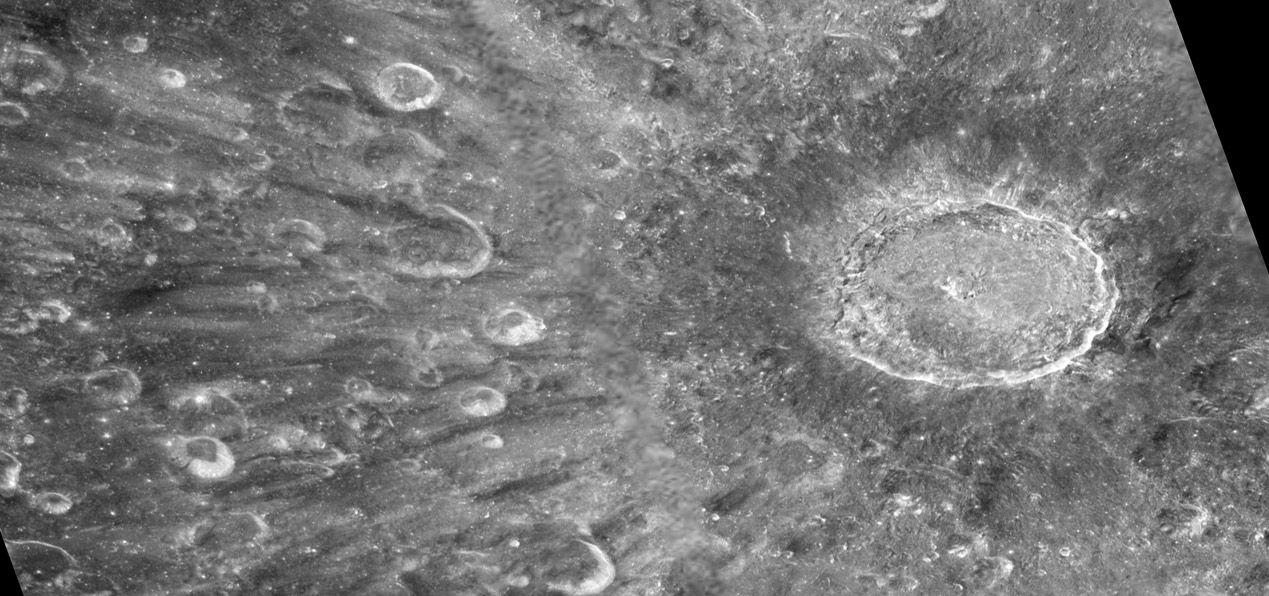June 8, 2012
Splashes of Brightness

north up image by " rel="nofollow NASA, ESA, and D. Ehrenreich (Institut de Planétologie et d’Astrophysique de Grenoble (IPAG)/CNRS/Université Joseph Fourier)
The Hubble Space Telescope has imaged the Moon only a few times but did so intensively during the transit of Venus.
The purpose was to see if the atmosphere of Venus could be detected by subtracting out a normal, non-transit image
of the Moon. The reason for this exercise is that the technique is used to try to find atmospheres around planets circling
distant stars. Imaging the Moon reflecting the Sun minus a tiny piece of transiting planet plus its atmosphere is an attempt to
see if the technique actually works with a planet that has a known atmosphere. Regardless of the results lunar scientists
get a new series of HST Moon pictures, including this one from 6 months ago which is a before shot. I was excited to see
it for it is a high Sun view with LRO like resolution (150 m). There are a couple of small albedo features of interest. For
example, note the few short bright streamers just north of the northern rim crest. These little linear deposits are draped
over the dark impact melt, which in general covers the bright rays. Interestingly, there are some concentrations of dark
melt to the east of Tycho - I wonder how those clumps occurred. And look at the rays beautifully exposed to the west.
It almost looks like a broom swept the fragmental bright material across the surface. Are the dark lanes between the bright
rays melt material or simply underlying highlands that are dark only by comparison to the rays?
" rel="nofollow Chuck Wood
Technical Details
January 11, 2012 HST Advanced Camera for Surveys (ACS) Wide Field Camera. A single exposure...Gaps in the HST
data have been filled using an image at similar lunar phase from the Consolidated Lunar Atlas.
Related Links
Rükl plate 64



